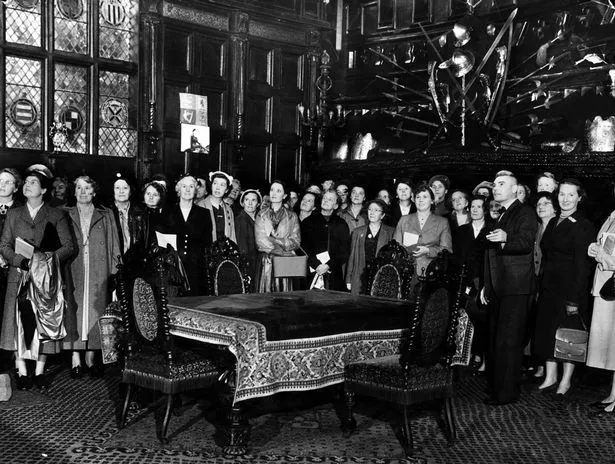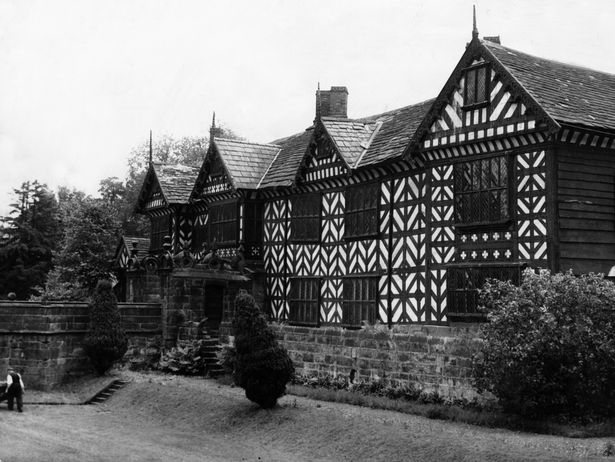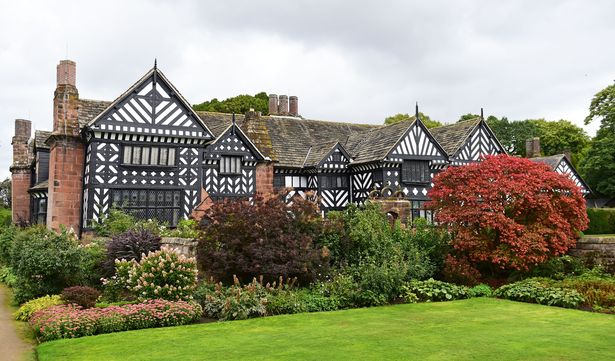Unsettling events have caused some guests to abandon their tours Keith Jones from Liverpool takes pictures of the city now and blends them with images of Liverpool from the past(Image: LEC)
Keith Jones from Liverpool takes pictures of the city now and blends them with images of Liverpool from the past(Image: LEC)
Perched on the banks of the River Mersey, Speke Hall stands as one of Britain’s finest surviving examples of Tudor architecture. Built in 1530 by the devoutly Catholic Norris family, this striking black-and-white timber-framed house has borne witness to over four centuries of dramatic and often turbulent history.
At the heart of its story lies religious persecution, reflected in the secret priest hole hidden within its walls – a chilling relic of a time when Catholic worship was driven underground. Over the years, that same atmosphere of secrecy and sorrow has given rise to Speke Hall’s reputation as one of the most haunted places in Liverpool.
For decades, both visitors and staff at the now National Trust-owned property have reported strange and unexplained experiences – some so unsettling that guests have abandoned their tours altogether. The hall’s eerie past is filled with ghostly tales, from the laughter of unseen children to the more sinister legend of a heartbroken mother and a tragic fall into the moat.
One of Speke Hall’s most infamous hauntings centres on the story of Mary Norris, who married Lord Sidney Beauclerk, nicknamed “Worthless Sidney” for his reckless gambling and squandered fortune. According to local legend, after learning of her husband’s financial ruin, Mary, consumed by despair, threw her baby from a window into the moat below.
 Lighton Engineers wives visit Speke Hall on September 16, 1953(Image: Mirrorpix)
Lighton Engineers wives visit Speke Hall on September 16, 1953(Image: Mirrorpix)
Visitors have since claimed to see her ghostly figure gliding through the Tapestry Room or staring solemnly out of that same window, cradling her child. Others report witnessing a child’s cot eerily rocking on its own.
However, historical records paint a different picture. Mary and Sidney’s son, Topham, actually lived to the age of 40 and became a well-known contemporary of Samuel Johnson. The family eventually moved to London following Sidney’s death in 1744, and in 1795, the estate was sold to Liverpool merchant Richard Watt.
The haunted legacy of Speke Hall gained wider attention in 2009 when the popular paranormal TV show Most Haunted filmed an episode at the mansion.
The crew reported a series of unsettling encounters – most notably, cameraman Stuart Torevell, who claimed to have been struck by an unseen force while investigating the attic alone. The team also reported poltergeist activity and ghostly laughter echoing through the draughty hallways.
 Exterior view of Speke Hall, the 16th century wood framed wattle and daub Tudor manor house in Speke(Image: Mirrorpix)
Exterior view of Speke Hall, the 16th century wood framed wattle and daub Tudor manor house in Speke(Image: Mirrorpix)
Even former staff members have shared their eerie experiences. Jean Tinsley, a former warden who worked at Speke Hall from 1978 to 1983, recalled a chilling encounter on her very first day.
Speaking to the ECHO in 2018 Jean Tinsley shared her experiences of working in the manor. She landed the job at 24 and worked there from 1978 to 1983. The mum-of-one said from her very first day she saw and heard things in the house, for which there was no reasonable explanation.
She said: “I had come in the back door of the house and was on my way to my office. There was a staircase with a metal banister and when I looked at it a man was just standing on the stairs glaring at me.
“He was in 17th century Puritan dress with the big tall wide-brimmed hat and white collar, over a black coat. I had my dog with me and he just cowered right down and his hackles on his back were up and he was growling as we walked away. Everyone said that whenever you went up those stairs it felt like someone was coming down brushing past you.
 Speke Hall(Image: Colin Lane/Liverpool Echo)
Speke Hall(Image: Colin Lane/Liverpool Echo)
“I had never felt threatened in the house until that day, but you could feel there was something bad and very menacing about his presence. I never went up those stairs again after that.”
The last surviving heir of the Watt family Adelaide Watt died in 1921. She left the estate in trust for 21 years and it was looked after by staff. In 1943 the house passed into the ownership of the National Trust and the charity took over full ownership in 1986.
One room in the mansion named the ‘Blue Room’ is said to be haunted by a spirit that whispers “get out” when spotted by guests. The room is also known for the the sound of children crying upon entering.
It will come as no surprise that these are embellished and exaggerated by tour guides who have become all part of the lore of the 500-year-old building. The stories are well-worn and fit nicely into the mystique of the building.
